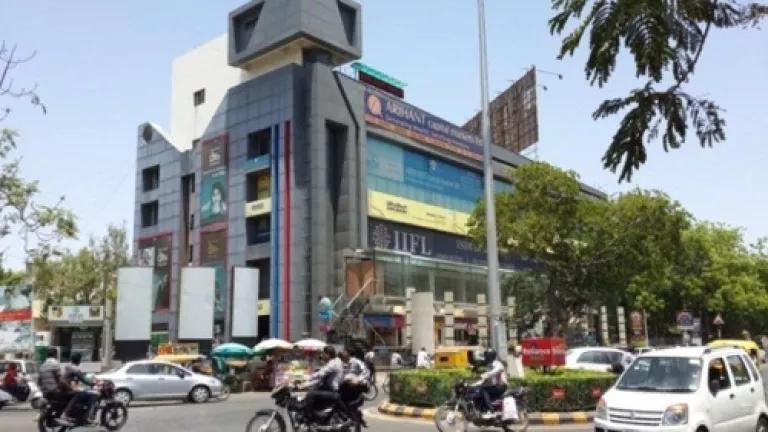Preparing for Climate Extremes: Lessons from India's Devastating Floods and Extreme Heat

Over 5,748 people are still missing in the epic floods that devastated mountain states in Northern India over a month ago as the country continues to writhe from this terrible tragedy. The monsoon raged across India with intense speed causing flash flooding in Himalayan towns and religious pilgrimage sites, washing away homes and lives, hitting Uttarakhand and Himachal Pradesh the hardest. An Indian Express Photo Series of flooded Uttarakhand documents the wreckage across the state. As the missing and victims are still being accounted for, the discussion continues as to whether and how much climate change and lack of disaster planning contributed to this tragedy.
Just before the massive floods, the Indian plains experienced a sweltering heat season, with a heat wave scorching 1.3 billion Indians with 115ËF (46ËC) temperatures. A recent Time Magazine photo series featured people trying to find ways to cool off, from watering holes to municipal water tanks. The high temperatures even propelled a national-level recommendation that heat be declared a natural calamity for the first time in India. Since the onset of the heat season, CSE reports that deadly heat waves have killed hundreds and affected thousands of vulnerable populations across India.
The alarming scale and impact of these natural disasters are an eye opener. The lives lost and massive destruction are a sober wake-up call that disaster planning, preparedness and early warning systems are vital to saving lives. A major report, Turn Down the Heat: Climate Extremes, Regional Impacts, and the Case for Resilience prepared for the World Bank by the Potsdam Institute for Climate Impact Research and Climate Analytics, finds that India will be threatened by a more erratic monsoon season, extreme floods, rising sea levels and very high temperatures due to climate change. It underscores the urgent need for officials from national to local levels to plan, prepare and warn ahead of devastating floods, heat waves, and other extreme weather events.
While it is a mere drop in the bucket compared to the action needed by government leaders across India and the world to build resilient cities to combat the lethal effects of climate change, the launch of the Heat Action Plan in the city of Ahmedabad is key example of an off-the-shelf solution that can save lives when disaster hits. The action plan, as featured by Reuters and called the “first comprehensive early warning system and preparedness plan for extreme heat events in India,” includes issuing warning alerts, activating emergency resources, and coordinating action between city stakeholders during heat events.
In this heat season, the Ahmedabad Municipal Corporation (AMC), along with its partners, has been leading the charge against extreme heat with three important pilot activities:
1) Installing electronic temperature displays to alert communities around the city. The signboard warns residents by displaying the current temperature and allows citizens to prepare for the heat ahead. The display pictured is the first in the city of Ahmedabad, and one of the first in India.
2) Launching more active community outreach and awareness campaigns, including billboards/hoardings around the city with instructions on how to “Save Yourself from Heat.” Thousands of pamphlets are being distributed to schoolchildren and urban health centers with heat-illness prevention tips. Those tips are also set to broadcast on a radio campaign, featured on a Radio Mirchi program.
3) Increasing interagency coordination to more effectively prepare for and respond to extreme heat events. The AMC, with the help of its partners, has developed an innovative early warning system to coordinate actions before and during heat waves. In partnership with Georgia Tech, daily emails provide upcoming forecasts for Ahmedabad and allow the city to increase heat preparedness. Another AMC focus is collaboration between city hospitals and key stakeholders to provide warning and resources during emergencies.
Photo by Dr. ABhiyant, IIPH
The AMC with its partners, the Indian Institute of Public Health, Public Health Foundation of India, Mount Sinai School of Medicine, Rollins School of Public Health at Emory University, Georgia Institute of Technology, and NRDC will be evaluating the initial launch and incorporating lessons learned into disaster preparedness including monsoons.
Around the rest of India, the Times of India reported that the National Disaster Management Authority (NDMA) has recommended declaring heat waves as natural calamities. This proposal would be the first time heat is recognized as a natural disaster in India and may encourage other cities to develop action plans. The recommendation would also offer compensation to heat victims under the National Disaster Relief Fund (NDRF).
The catastrophic floods have served as even a greater call to action. The India Climate Justice Collective, in an open letter in the Economic and Political Weekly, is urging the Indian Government to take action. The group asserts that an urgent prior warning could have ensured that pilgrims did not move forward and that locals reduced their exposure to risk ahead of the recent floods that ravished the country. To mitigate the deadly impact of these natural disasters, the Collective urges the central government to incorporate a disaster prediction and warning mechanism into existing climate change action plans. The letter also urges the government to closely examine and reformulate planning and construction in the Himalayas and to move forward with “a low carbon pathway of development that has equity, decent employment, and sustainability at its core.”
Disaster planning and preparation, like the heat action plan implemented in Ahmedabad, can help save lives when the next tragic natural disaster hits. We hope government officials across the world take this wake-up call to heart and continue making disaster planning a key part of climate change action moving forward.
(Co-authored by Lauren Sanchez, NRDC Moran Fellow)
